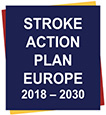Evaluation of Quality and Outcomes

The basis for improvement
The Stroke Action Plan for Europe 2018–2030 aims to raise the overall standards of care that patients can expect, in accordance with international evidence-based practice and to enable weaker services to improve.
Systematically improving the quality of stroke care can only be achieved where stroke guidelines and data is routinely collected, so that services can be audited. Data needs to be collected on the structure of stroke services (facilities, staffing etc.); the processes of care (door to needle times, intensity of rehabilitation provided, time to get to a stroke unit, etc.) and outcomes (mortality, physical, cognitive and psychological disability, frequency of complications such as pneumonia etc.).
Comprehensive guidelines need to be developed and used to set standards for clinical services. While international guidelines such as the ESO stroke guidelines can form the basis for national guidelines, these need to be adapted for use within different health systems. The guidelines should form the basis for developing audit standards.

SAP-E Key Performance Indicator
Establishment of national and regional level systems for assessing and accrediting stroke clinical services, providing peer support for quality improvement, and making audit data available to public.
Further research and development priorities - Evaluation of quality and outcomes
- What definitions should be used across Europe for the recording and reporting of data on stroke and TIA?
- What are the most effective and efficient systems for the collection of data on the quality of stroke care across Europe?
- How can data on the quality of care be used to compare process and outcomes of care, taking into account variations in case-mix, and what is the minimum dataset that is needed?
- What are the systems needed to allow international comparisons of the clinical and cost-effectiveness of care, and reporting of within-country variations and variations by other factors such as geographical region (urban versus rural), and variations over time?
- What are the most effective quality improvement tools that will enable learning from examples of best practice?



